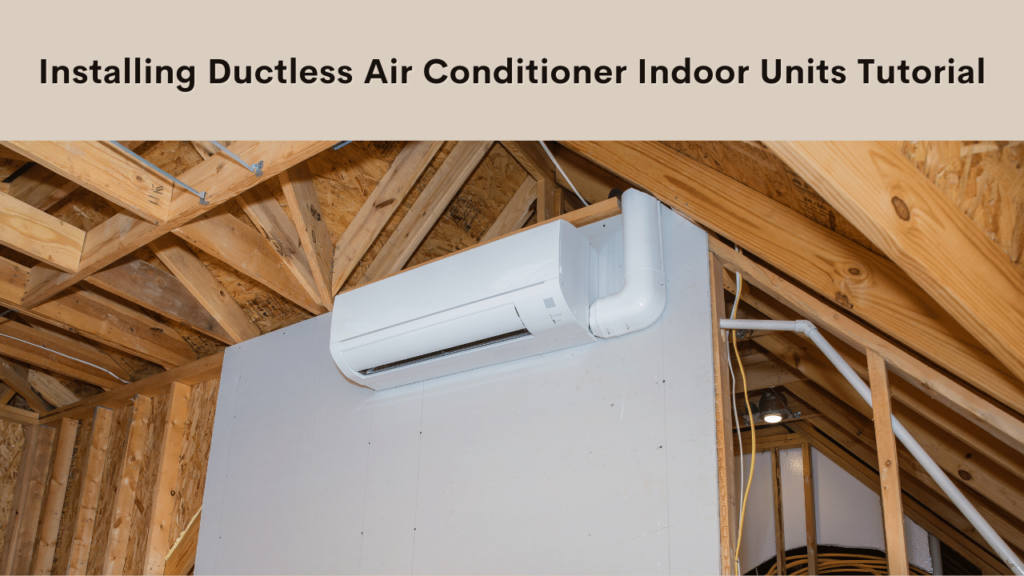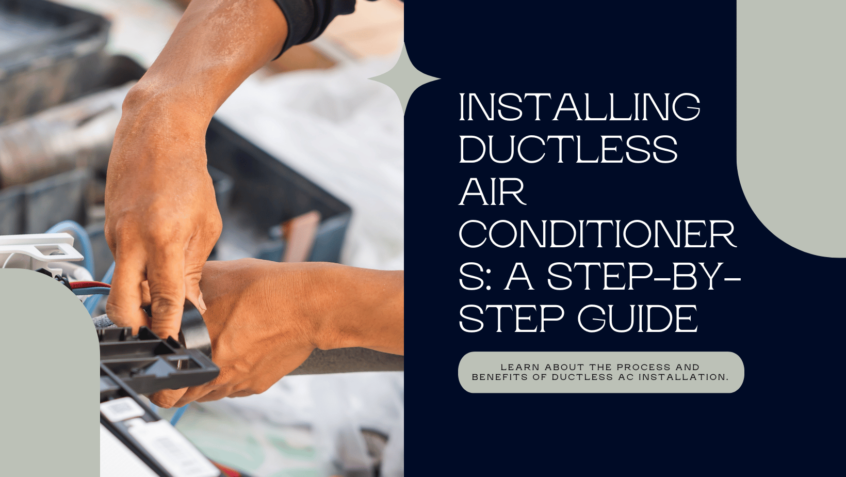A ductless air conditioner is a heating and cooling system popular with modern homeowners, especially those renovating their homes.
Ductless air conditioning, also referred to as mini-split air conditioning, is a type of HVAC unit that offers cooling and heating without the use of ductwork. Compared to conventional central air conditioning that needs an intricate system of ducts to circulate cooled air, ductless systems involve an outdoor compressor/condenser linked by refrigerant lines to one or more indoor units installed on the wall or the ceiling of rooms or areas to be cooled.
Benefits of Ductless Systems
Ductless systems offer several advantages over traditional central air conditioning:
Less wastage of energy: Whereas traditional HVAC systems condition the entire building, variable refrigerant flow condition only the occupied zones; hence, less energy is consumed. There are also ductless systems with an inverter compressor, which are equally effective in modulating capacity as needed.

Zoning control: All indoor units have their own zoning control, thus enabling the user to partition the rooms and set different temperatures for the partitioned areas. This also helps to increase efficiency in the use of energy. The above also helps to increase efficiency in the use of energy.
Advanced features: The wall-mounted indoor units can be installed in almost any indoor environment since they do not require ductwork for distribution for air and water. Thus, it is possible to add cooling to renovated sections, extensions, and garages, among others.
Low noise level: It has low noise levels as it does not make any sound produced by air handlers or ductwork. : The newest models are very quiet.
Choosing an Installer
In this case, there are several things to note when installing the ductless system. Hence, it is advisable to hire a professional installer. Ideal installers should:
Be licensed technicians specifically trained in how to properly install ductless systems.
Are familiar with different types of ductless systems, mainstream brands, and models
It is recommended to adhere to the guidelines provided by the manufacturer of the product.
Identify the size components and ascertain where they should be positioned effectively
Provide possible options for future maintenance and service of the product.
If you are looking to have a ductless system installed, it is highly advised to have an installer who knows this type of system to make sure your system is running efficiently and for many years to come.
Installing the Outdoor Unit
The condenser coil, the cooling fan, and the compressor are housed in an outdoor unit. Proper outdoor unit placement and installation includes:
Location:
As for the installation, it is suggested to mount the unit on the stable, flat base, such as concrete pad, blocks or mounting stand. Integrate sufficient space clearances to allow adequate ventilation around the unit.
Keep outdoor unit near indoor units to reduce the required length of refrigerant lines. Position the object with its back towards windows or any part of the house that experiences heavy traffic. It is recommended that the outdoor unit should be tested and examined for refrigerant charge and functionality after installation.
Mounting the Indoor Units
Unlike central air handlers that are large and have a complicated design, indoor units are thin and slim. They can easily be hung on walls or even the ceiling. Installation considerations include:

Location:
It should be mounted at a high point on the wall or ceiling, preferably in the geometrical middle of a room or a specific zone
Do not place the item in areas of low air circulation such as in a corner, or behind furniture
Make sure the placement of the material will not obstruct the openings of any windows or doors
Installation Steps:
Bolt mounting plate to the wall/ceiling with appropriate screws/anchor screws
Join the refrigerant and condensate drain lines
There are two options how to fix the indoor unit on the mounting plate
Solder wires according to the code of practice of the specific country
It is necessary to cover the mounting plate with the front panel to hide it
For functionality, proper installation of the indoor units should be done to allow air circulation and have a good appearance.
Connecting Refrigerant and Power
Refrigerant Lines:
Place copper refrigerant lines from one unit, that is, the outdoor unit, to the other unit, which is the indoor unit
Make sure not to have conductive or convective heat gain/loss areas and avoid condensation on insulated lines
Carry out leakage tests before depressurizing pipes and circuits
Electrical Power:
Crew terminals to matching wires Secure wire connectors to terminals per local codes
Install low-voltage communication wiring between units
Ensure there is a connection of power on the indoor unit(s)
After the refrigerant and electrical connections have been made, the system can be turned on for the initial run by the installing technician.
Conclusion
Ductless air conditioning systems need careful planning and application to fit every scenario that comes along. While it can be done by the homeowner, it is always advisable to consult a professional to ensure proper installation and durability of the equipment. By hiring the right ductless system installers, the homeowners will be able to feel the benefits of efficient heating and cooling for several years.

